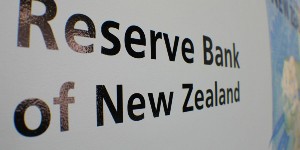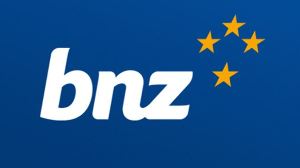
The Reserve Bank cut its official cash rate (OCR) from 3.25% to 3% on Wednesday and signaled two further cuts by the March quarter of next year to 2.5%, indicating at least one more cut than markets had expected.
In terms of RBNZ’s forecasts, in May, it had predicted that the lowest point of the OCR in the current cycle would be 2.9% but on Wednesday it signaled that 2.5% would be the lowest point, a significantly more dovish view.
Possibly an even more dovish clue to RBNZ’s change of heart was that its monetary policy committee had to vote on whether and by how much to cut its official cash rate (OCR) with four supporting the 25-basis point cut to 3% that was delivered, but two thinking a 50bp cut was warranted.
RBNZ had held the OCR steady in July after cutting from 3.5% to 3.25% in May.
SPI Asset Management managing partner Stephen Innes said RBNZ didn’t just resume cutting rates, “it laid down a marker,” and described it as “the canary in the coal mine moment.
“Traders didn’t expect such an unambiguous dovish pivot, and when the smallest bird in the room starts gasping, the rest of the central bank aviary takes notice,” Innes said, noting that other much larger central banks need to listen when RBNZ “admits growth is stalling and neutral policy may be too high.”
BNZ economist Stephen Toplis noted the wholesale interest rate markets scurried to price in the central bank’s more dovish tilt.
“It will come as no surprise to hear that a market which, yesterday, was reluctant to price two cuts in is now scurrying to price in three,” Toplis said.
Greenlighting the market response
The RBNZ “largely gave the green light to the market response.”
Asked directly at the media conference about whether RBNZ was comfortable with financial markets’ response, acting governor Christian Hawkesby, chief economist Paul Conway and Assistant RBNZ governor Karen Silk all said that they were.
Hawkesby noted that RBNZ signalling with both the actual OCR cut and the forecast cuts in the near future meant financial markets could price in an easing in monetary conditions.
Independent economist Tony Alexander said that " there may be a tad more downside in the one-to-three-year fixed mortgage rates than was previously the case."
Kiwibank's economists said the RBNZ we saw on Wednesday was "almost completely different from the one we saw in May," and noting that the economy hadn't evolved as expected.
The RBNZ’s latest monetary policy statement acknowledged that the NZ economy has stalled since its May statement and it now thinks the economy actually shrank 0.3% in the
June quarter compared with its previous forecast of 0.3% growth for those three months, a significant turnaround.
RBNZ noted that house prices have been declining, even though it has now cut the OCR 250bp from 5.5% since August last year and that ongoing weakness in house prices is contributing to subdued residential construction and household consumption.
Silk told journalists that only about half of existing mortgages have re-priced since the central bank began cutting the OCR and that the other half should refix onto lower rates over the next six months, reducing debt servicing costs.
RBNZ noted that household inflation expectations have increased sharply, likely reflecting angst about the tariffs the US has been imposing on its trading partners – the US was NZ’s second largest market for both exports and imports in the June quarter, behind China.
It said that a larger share of households had fixed for shorter terms as interest rates began falling and that had delayed the impact of the lower OCR.
It noted that lower population growth, driven my more New Zealanders moving overseas being offset by fewer immigrants, is reducing growth in household income, spending and rents as well as dampening house prices.




Comments
No comments yet.
Sign In to add your comment